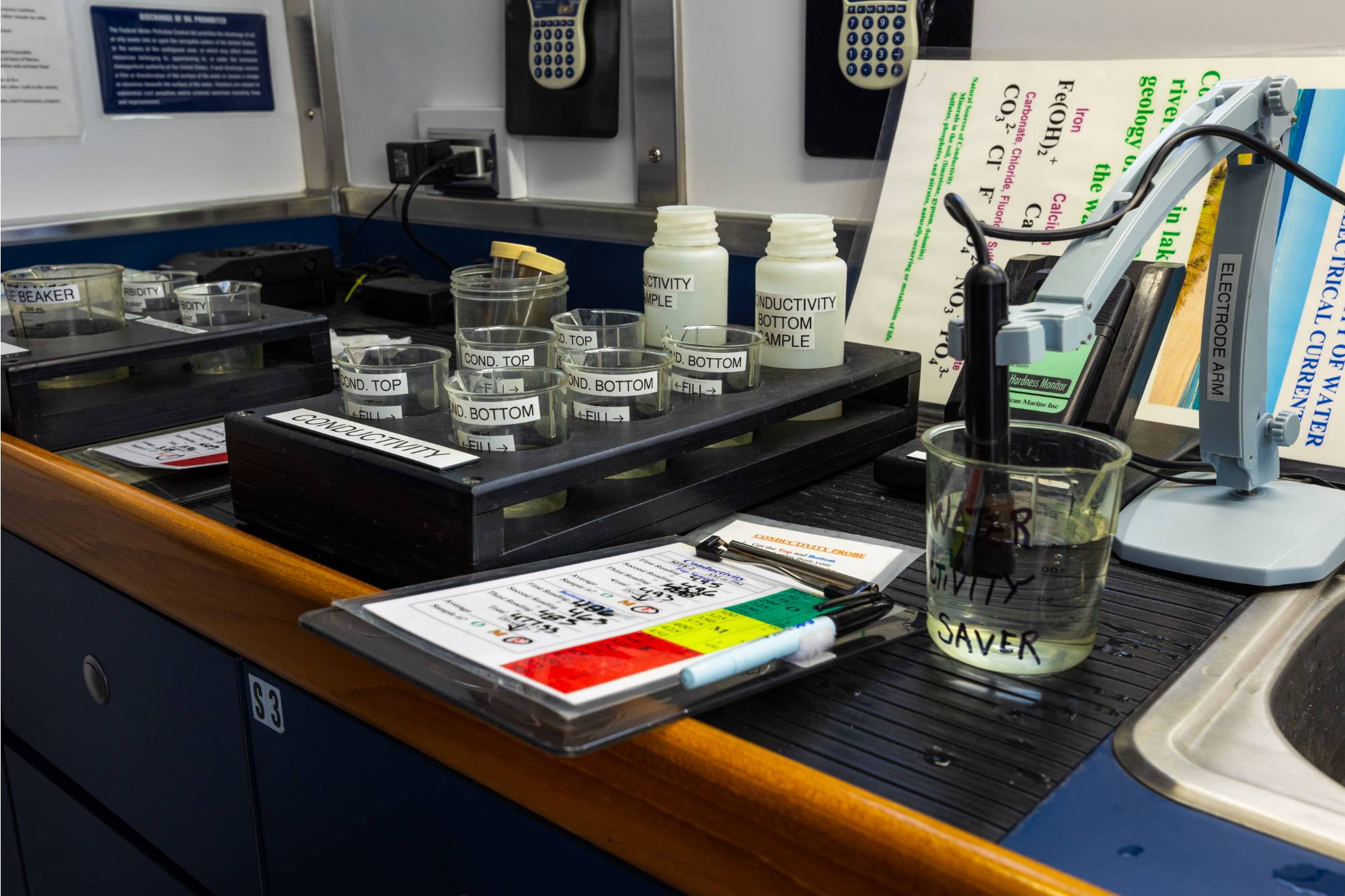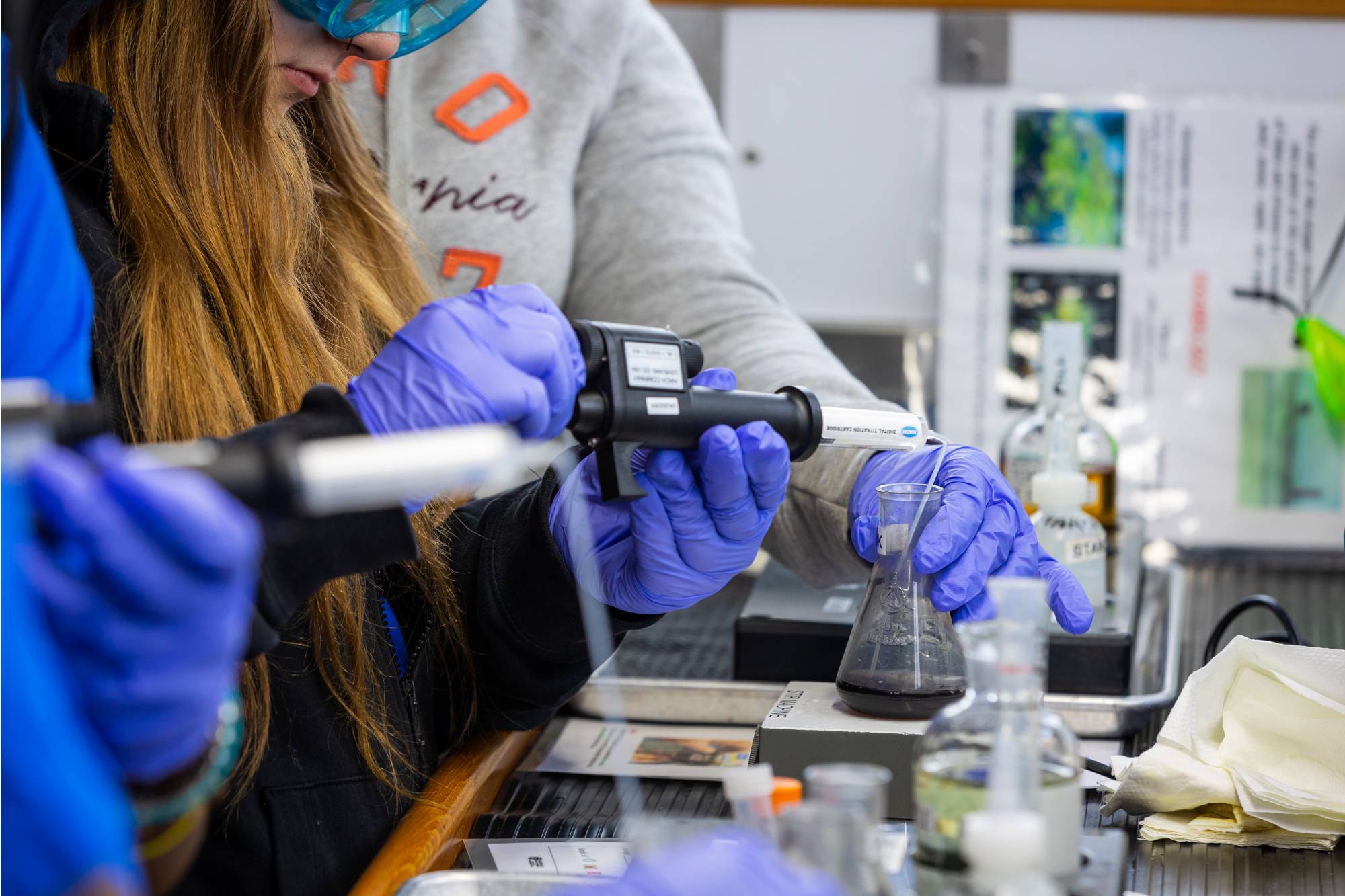A Typical Cruise


Cruise Overview
Most cruises last two and one-half hours. This permits the students to sample one station in Lake Michigan and one station in Spring Lake, Grand River, or Muskegon Lake. However, if it is unsafe to venture onto Lake Michigan, the second sample will be taken from inland waters. Shorter trips, longer trips, or a dockside experience can be arranged for special circumstances.
Science Instructors from the Grand Valley State University Water Resources Outreach Education Program accompany the group making the cruise. The instructors, with the assistance of the crew, lead participants through water, plankton, and sediment sampling procedures as well as the mechanics and significance of the analytical water quality tests. University classes are usually assigned one AWRI instructor and the regular professor guides the hands-on educational experience. Sampling equipment on each vessel is available for the collection of water, sediment, and biological samples. An on-board laboratory allows sample analysis to take place while the vessel travels from one sampling station to another. Students and teachers can take samples and data back to the classroom for further study and discussion.
On cruises, the specific topics and depth of coverage vary with age level. In general, the biological, physical, and chemical dynamics and the interrelationships of rivers, inland lakes, and the Great Lakes are illustrated. Eutrophic-mesotrophic (inland lakes) and oligotrophic-mesotrophic (Lake Michigan) systems are compared and contrasted. Human impacts on ecosystems are explored such as shoreline development, impacts of land use, and invasive species (lampreys, zebra mussels, spiny water fleas, etc.).
See our Vessel Curriculum Guide for more information on the content covered on our cruises.
Preparing Students
Prepare your students for their upcoming cruise with the Exploring the Lakes video. This video highlights important safety information and provides an overview of the experience.
Exploring the Lakes Video
Cruise Activities
For grades four through twelve, attention is paid to activities and concepts that align with local and state education standards. Advanced groups may request customized cruise experiences. College groups will have a more in-depth experience.
Sampling protocol on cruises is modeled after the Global Learning and Observations to Benefit the Environment (GLOBE) program. GLOBE requires quality control and quality assurance, standardized methods and equipment, and replicates for environmental measurements. Data from GLOBE trips can be placed on the GLOBE international website for use by scientists and students throughout the world.

Looking for support in integrating aquatic science into your classroom curriculum before or after a trip on AWRI vessels?
Contact Christina Catanese at catanesc@gvsu.edu.
Read highlights and analysis from our program in our annual report
